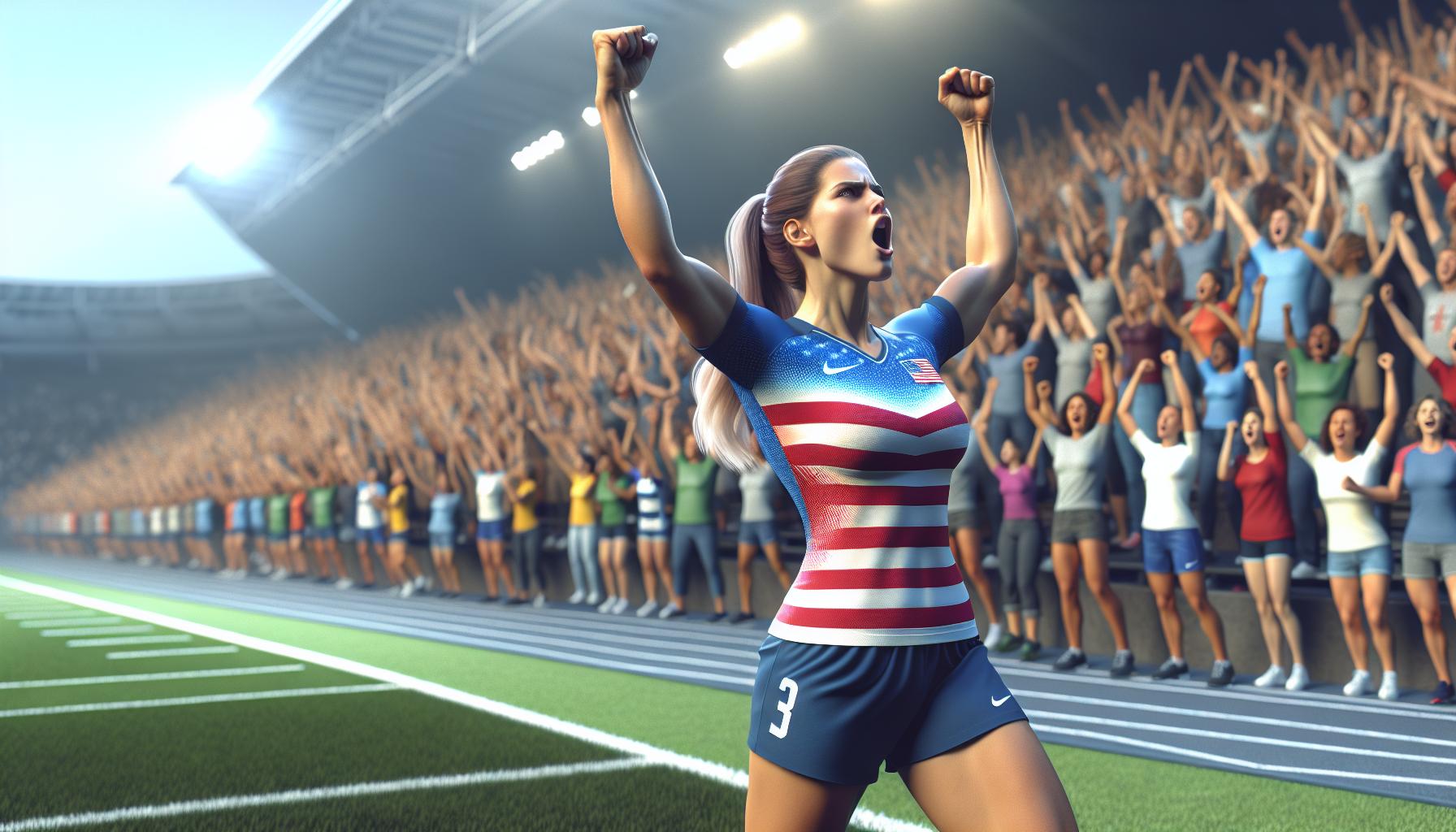In a world where sports marketing often feels like a boys’ club, women’s sports are stepping into the spotlight with a flair that’s impossible to ignore. Picture this: stadiums packed with fans, social media buzzing with excitement, and brands scrambling to get a piece of the action. It’s not just a trend; it’s a revolution, and it’s about time!
As more people recognize the talent and tenacity of female athletes, the marketing landscape is shifting dramatically. Companies are waking up to the fact that supporting women’s sports isn’t just good for equality; it’s also a smart business move. So, what’s the scoop on the latest trends? Let’s dive into the game-changing truths that are reshaping how brands connect with this vibrant and dynamic audience.
Which of These is True Regarding Sport Marketing Trends Surrounding Women’s Sports?
Sport marketing trends increasingly reflect the dynamic nature of women’s sports. Brands actively seek to align with female athletes, recognizing their influence and reach. Enhanced media coverage showcases women’s competitions, leading to higher visibility and fan engagement.
Investments in women’s leagues have surged, displaying a commitment to equal representation. Sponsorship deals with female athletes often emphasize authenticity and relatability, resonating with diverse audiences. Major organizations, including FIFA and the NCAA, prioritize women’s events, showcasing elite talent and expanding their market share.
Data indicates women’s sports viewership is on the rise, with some events, such as the Women’s World Cup, attracting record audiences. Engagement metrics reveal young fans show significant interest in women’s competitions, prompting brands to tailor marketing strategies accordingly.
Utilizing social media for promotional campaigns has become commonplace, allowing brands to connect directly with fans. Engaging content that highlights female athletes’ stories fosters a sense of community within the sport. Brands increasingly leverage these narratives to strengthen emotional connections and enhance brand loyalty.
In addition, product lines dedicated to women athletes emerge, capitalizing on the growing demand for female-focused sports gear. Custom merchandise, inclusive marketing campaigns, and female athlete endorsements further illustrate this shift.
Data-driven strategies play a crucial role in shaping marketing approaches, ensuring effective targeting of female audiences. Marketers now analyze engagement data to refine their tactics, enhancing interaction with this demographic.
Growth of Women’s Sports in the Media

The growth of women’s sports in the media reflects a transformative period in sports marketing. Increased coverage has led to greater visibility for female athletes and their accomplishments. Major networks regularly broadcast women’s events, contributing to higher viewership numbers. Reportedly, the Women’s World Cup gained record audiences, indicating strong fan interest. Enhanced media exposure drives engagement, encouraging new fans to follow women’s sports actively. Brands recognize this trend as an opportunity to engage with audiences who value representation and equality.
Increased Coverage and Visibility
Increased media coverage shapes the perception of women’s sports. More leagues and tournaments receive airtime, making events accessible to wider audiences. Television and online platforms are prioritizing women’s competitions, showcasing elite talent. Additionally, social media platforms amplify the visibility of female athletes, connecting fans with behind-the-scenes content and personal stories. This direct connection fosters community and loyalty among supporters, further elevating women’s sports in mainstream discussions.
Sponsorship Opportunities
Sponsorship opportunities for women’s sports are expanding rapidly. Brands see value in associating with female athletes, recognizing their influence on emerging markets. High-profile partnerships with popular athletes help build credibility and attract new fans. Furthermore, companies are investing in exclusive sponsorship deals for women’s events, increasing financial support for leagues and teams. Marketers report that these investments yield substantial returns as brand loyalty grows among female sports fans. This environment creates fertile ground for nurturing new relationships between brands and audiences driven by passion and representation.
Audience Engagement Strategies

Engagement strategies in women’s sports continue to evolve, driven by innovative approaches to connect with audiences.
Social Media Impact
Social media serves as a pivotal platform for promoting women’s sports. Brands leverage platforms like Instagram and Twitter to share compelling narratives about female athletes. Direct fan interaction fosters community and loyalty, making fans feel part of the journey. Visual content showcasing behind-the-scenes moments significantly enhances engagement. As a result, campaigns targeting younger audiences flourish, aligning brand messaging with the interests of this demographic. Recent statistics indicate that viewership for women’s sports grows in tandem with social media reach, proving the effectiveness of these digital platforms in driving interest and attendance.
Community Involvement
Community involvement proves crucial in enhancing engagement for women’s sports. Brands increasingly support local events, creating connections with fans and showcasing commitment to the sport’s growth. Sponsoring youth leagues or organizing community clinics allows brands to make a tangible impact. Local partnerships build grassroots support by engaging families and future athletes. Significant investment in community events translates to increased attendance in women’s sports, creating loyal fan bases. Active participation in community initiatives not only elevates brand visibility but also nurtures a sense of belonging among supporters, driving long-term relationships in the market.
Brand Partnerships and Collaborations

Brand partnerships are crucial for amplifying the visibility of women’s sports. Collaborations between brands and female athletes reflect the growing recognition of their influence in the market.
Case Studies of Successful Campaigns
Nike’s “Dream Crazier” campaign, featuring female athletes like Serena Williams, effectively highlighted gender equality and empowerment. The campaign garnered significant attention for celebrating women’s strength and resilience. Another notable example involves Gatorade’s partnership with the U.S. Women’s National Soccer Team, which focused on their fierce determination during the World Cup. These campaigns not only showcased the athletes’ achievements but also aligned brands with values that resonate with consumers.
Challenges and Opportunities
While opportunities abound, challenges persist within the realm of women’s sports marketing. Limited historical media coverage may deter potential sponsors from fully committing. Nevertheless, increasing viewership numbers present a compelling case for investment. Brands can capitalize on this growing audience by initiating targeted campaigns that address specific interests, such as health or empowerment. Engaging content that resonates with fans and aligns with athletes’ stories can overcome barriers and foster lasting partnerships. Expanding representation in marketing strategies serves as a vital opportunity to build connections within the community.
Future Trends in Women’s Sports Marketing
Forecasts suggest women’s sports marketing will continue its upward trajectory. Increased investment from brands highlights the shift toward gender parity in sports. By 2030, female athletes could gain even greater prominence through enhanced marketing strategies.
Predictions for the Next Decade
Surging viewership for women’s sports indicates future growth. Major events, such as the Women’s World Cup, are projected to attract more viewers as young fans engage with female athletes. Increased media coverage will likely create more opportunities for sponsorship deals, fostering stronger partnerships between brands and women’s sports leagues. Marketing campaigns centered around female empowerment can resonate with audiences, driving engagement and loyalty. Both community support and grassroots initiatives will play crucial roles in sustaining this momentum.
Role of Technology and Innovation
Advancements in technology will significantly influence women’s sports marketing. Social media platforms are vital for reaching a broader audience, enabling brands to connect directly with fans. Innovative content, like live-streaming and immersive experiences, enhances fan interaction. Data analytics tools allow marketers to refine their strategies, ensuring that campaigns effectively target specific demographics. Furthermore, wearable tech can extend engagement beyond events, keeping fans connected with athletes year-round. The integration of these technologies will elevate women’s sports visibility, fostering deeper connections within the community.
Sport Marketing Trend
The landscape of women’s sports marketing is evolving rapidly. As brands recognize the significant potential in this sector, they’re adapting their strategies to align with the growing interest in female athletes. Enhanced visibility through media coverage and social media engagement is fostering a deeper connection with fans.
This shift not only promotes gender equality but also presents lucrative opportunities for brands willing to invest in women’s sports. As the audience continues to expand and evolve, the future looks bright for female athletes and the marketing strategies that support them. The commitment to representation and empowerment will undoubtedly shape the next phase of sports marketing.



